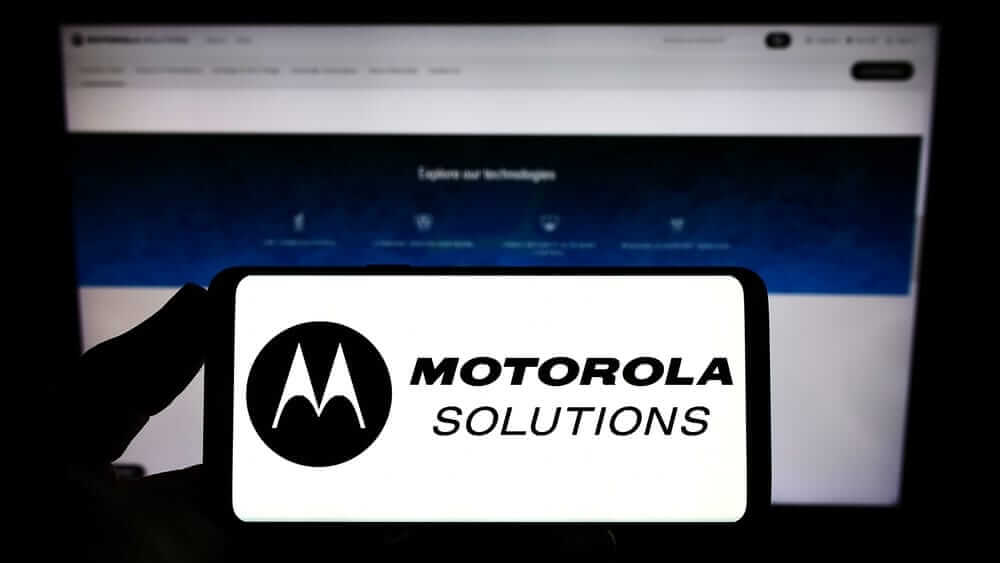Copyright menafn

We're always warned to keep our Social Security number secret, but what if you were told it wasn't? The Office of the Inspector General (OIG) for the Social Security Administration is warning seniors about a new scam that uses fake U.S. Supreme Court letterhead and forged signatures from Chief Justice John Roberts and Justice Sonia Sotomayor to pressure recipients into sending money or personal financial information to the scammer. [1] Thanks to Jeff Bezos, you can now become a landlord for as little as $100 - and no, you don't have to deal with tenants or fix freezers. Here's how Dave Ramsey warns nearly 50% of Americans are making 1 big Social Security mistake - here's what it is and 3 simple steps to fix it ASAP Robert Kiyosaki says this 1 asset will surge 400% in a year - and he begs investors not to miss its 'explosion' Here's how it works. The“high-pressure” scam letter is usually personally addressed to the target and tells them that they are a primary suspect in legal proceedings that involve criminal charges. The letter may use the name of a real SSA executive to appear legitimate. It falsely claims that the recipient's Social Security number has been compromised due to identity theft and that the SSA will issue a new one. The scammers warn that the U.S. Supreme Court has ordered banks to freeze the recipient's assets and that they cannot hold more than $10,000 in any account or $80,000 to $100,000 in investments. It further threatens that the recipient will be fully liable for any losses tied to the suspension of their Social Security number. Scammers often follow up these letters with phone calls or text messages to continue the fraud. “Scammers continue to exploit fear and confusion by impersonating government agencies and officials,” said Michelle L. Anderson, the SSA OIG's Acting Inspector General.“These criminals are falsely accusing an individual of a crime and using federal agencies and federal officials to try to scare and legitimize their scam - if you get this type of letter, rip it up and report it. Be aware of any variations of this scam.” This is just the latest in a series of scams targeting retirees. The SSA OIG has also flagged a related tactic that uses U.S. mail to send letters about a cost-of-living adjustment (COLA) or other benefit change. The letter tells you to call a toll-free number to“activate” the increase. Scammers design the letter to mirror real SSA letterhead. The Federal Trade Commission (FTC) says the number of reports of scams where older adults lost $10,000 or more increased more than fourfold from 2020 to 2024. Where older adults lost more than $100,000, the number of reports increased nearly sevenfold, and the combined reported losses went up eightfold. [1] “Some people 60+ have reported emptying their bank accounts and even clearing out their 401ks,” said the FTC.“While younger people report losing money to these imposters too, reports of losses in the tens and hundreds of thousands of dollars are much more likely to be filed by older adults.” Read more: Robert Kiyosaki warns of a 'Greater Depression' coming to the US - with millions of Americans going poor. But he says these 2 'easy-money' assets will bring in 'great wealth'. How to get in now Imposter scams are not new. Many arrive by phone, text, or email. The SSA and FTC track variants that push you to click a link to“claim benefits,” download a fake“security update tool,” or open bogus“statements.” The new twist is the use of Supreme Court letterhead and criminal accusations to magnify urgency. It also relies on paper mail that looks formal. That presentation can disarm cautious readers who know to ignore random texts or calls. Losses from fraud are rising. The FTC reports consumers lost more than 12.5 billion dollars to fraud in 2024, a 25% increase, with imposter scams being the most commonly reported scam category. [2] Scammers may already know some of your personal information. They tend to create urgency, demand secrecy, and push untraceable payments like gift cards, crypto, wire transfers, cash by mail, or gold. Legitimate SSA staff will never threaten arrest, suspend your number, promise benefits in exchange for payment, or ask you to pay in those ways. Social Security's Office of the Inspector General recommends seniors should immediately stop and think whenever they get a distressing or unusual communication that looks suspicious. Talk to someone you trust before paying, and you can stay up to date on the latest scam warnings and tactics by following SSA OIG on social media. You can also report Social Security-related scams on the agency's website. Always be suspicious of unexpected communications, especially ones that push a sense of urgency and emergency. According to the FTC, even though scams start with a letter or an email, the goal is to get the victim on the phone, which is the best way to dial up reason-debilitating fear. And keeping the victim on the phone until they have handed over important financial information keeps the mark from being able to contact someone who could verify the scammers' information. Two important steps recommended by the FTC are“don't move money to protect it” and“hang up and verify.” Scammers often create urgency to trick people into acting quickly. Instead, hang up immediately and contact the company or government agency directly using a verified phone number or website. Never rely on contact information provided in pop-ups, texts, or emails, as these are common tools used by scammers to appear legitimate. When any“official” notice arrives, find the agency's number yourself and call to verify before doing anything. If a letter mentions criminal charges, immediate payment, secrecy, or non-traceable payment methods, treat it as a scam and report it. For mail-based scams, loop in the Postal Inspection Service. If you shared data, place a fraud alert or credit freeze and begin identity theft recovery steps right away. For tech-savvy loved ones of vulnerable seniors, you can help by turning on multi-factor authentication and saving the SSA OIG reporting page and the FTC reporting page in the browser. In recent years, scammers have grown more aggressive, often targeting older adults they assume are less familiar with technology. The best defense is to stay calm, pause before reacting, and verify any suspicious message or request before taking action. Want to retire with an extra $1.3M? See how Dave Ramsey's viral 7-step plan helps millions of Americans kill debt and build wealth - and how you can too I'm 49 years old and have nothing saved for retirement - what should I do? Don't panic. Here are 6 of the easiest ways you can catch up (and fast) There's still a 35% chance of a recession hitting the American economy this year - protect your retirement savings with these 5 essential money moves ASAP This tiny hot Costco item has skyrocketed 74% in price in under 2 years - but now the retail giant is restricting purchase. Here's how to buy the coveted asset in bulk Join 200,000+ readers and get Moneywise's best stories and exclusive interviews first - clear insights curated and delivered weekly. Subscribe now. We rely only on vetted sources and credible third-party reporting. For details, see our editorial ethics and guidelines. FTC (1 ); FTC (2 ) This article provides information only and should not be construed as advice. It is provided without warranty of any kind.



